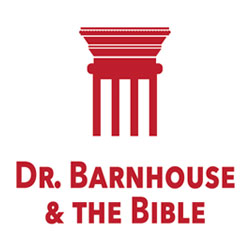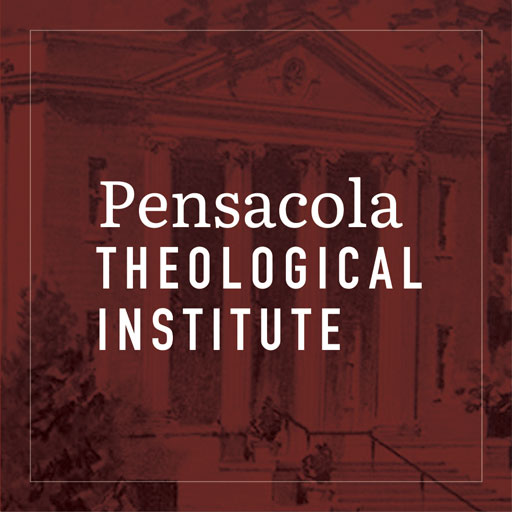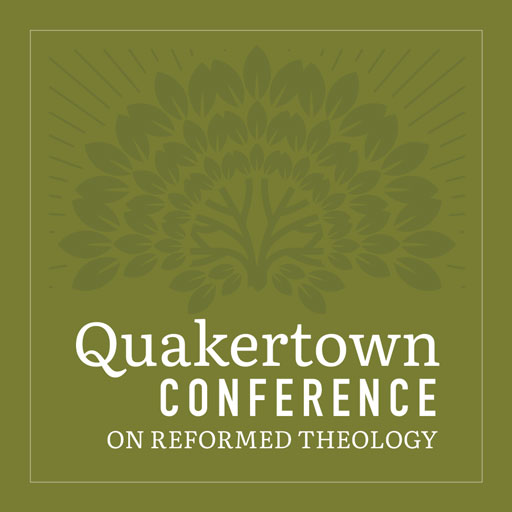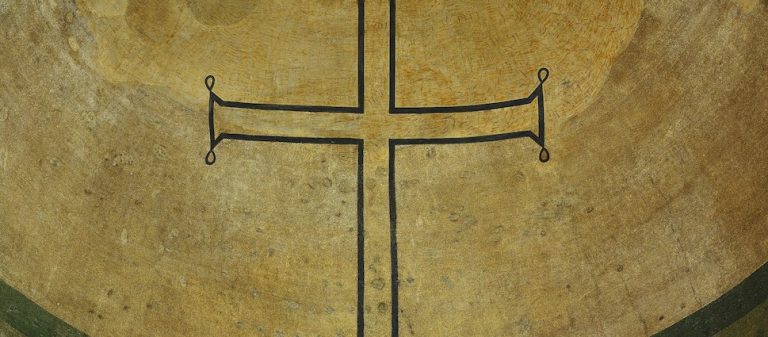As we have seen in our study of the preceding articles in the Thirty-Nine Articles, article 25 on the sacraments maintains that they are not only badges and tokens of Christian men’s profession, but “…certain sure witnesses, and effectual signs of grace, and God’s good will towards us, by the which he doth work invisibly in us, and doth not only quicken, but also strengthen and confirm our Faith in him.” And according to article 26, the unworthiness of ministers does not hinder the effect of the sacraments, since the sacraments belong to Christ. From these general principles, Cranmer continues his exposition on the sacraments in a more specific study of the sacrament of baptism.
XXVII—Of Baptism
Baptism is not only a sign of profession, and mark of difference, whereby Christian men are discerned from others that be not christened, but it is also a sign of Regeneration or new Birth, whereby, as by an instrument, they that receive Baptism rightly are grafted into the Church; the promises of the forgiveness of sin, and of our adoption to be the sons of God by the Holy Ghost, are visibly signed and sealed; Faith is confirmed, and Grace increased by virtue of prayer unto God. The Baptism of young Children is in any wise to be retained in the Church, as most agreeable with the institution of Christ.
Article 27 is nearly identical to Cranmer’s 1553 original, with a change to the last sentence, “The custom of the Church to baptize young children is to be commended and in any wise…” Parker’s 1563 redundancy of the “…sign and seal of our new birth,” was edited in 1571 to the fuller, “…sign of regeneration or new birth,” which explains the signification of the visible sign and seal. It is significant that both Archbishops Cranmer and Parker had infants in mind in this article, even though our English translation has “young children” in the last sentence. Cranmer’s Latin original uses the word parvuli, the word used most frequently in the Latin Vulgate for “infant.” We may also add that Cranmer’s 1549 and 1552 Book of Common Prayer lacked a baptism service for adults. It appears for the first time in 1662.
When we come to the specifics of the article four doctrines are listed:
- The baptized infant who receives baptism is grafted into the church. The baptized infant is brought into the visible church, recalling article 26 that the visible church is a mixture of the converted and unconverted, but comes under God’s visible means of grace in the preaching of the pure Word of God (article 19).
- God’s promise of the forgiveness of sin and the adoption as son and daughters of God by the power of the Holy Spirit is visibly signed and sealed. The assurance of baptism “received rightly,” that is, by faith in God’s promise that the good work he has begun in you he will bring to completion at the day of Jesus Christ (Phil. 1.6).
- The gift of faith (in those whom God has sovereignly chosen and effectually called – article 17) will be confirmed. Baptism strengthens and confirms faith because once the promise has been received in trust serves as its own reassurance that what was apprehended as a sign will be fulfilled in reality.
- God’s grace is increased through prayer. The grace of God brings fruit in our lives as we live in the obedience of faith, seeking him in prayer. The article is intentionally general in its application here so that the prayers of the parents and godparents for the child and the intercession of the child themselves are included.
The article takes care in explaining the way in which the Spirit uses baptism throughout the entire course of the believer’s life thus avoiding two errors of the time that remain common among North American Anglicans today. The first error is the error of those who would so subjectivize the symbolism of the water sign that the believer turns inwardly toward their own actions, decisions, and experiences. Such an inwardness runs contrary to the gospel distorting the reality of saving faith. The faith that turns away from our own resources and doings to the amazing grace that is the believer’s in the Lord Jesus Christ. The second error is the Roman Catholic doctrine ex opera operato which asserts that baptism’s sign of regeneration is efficacious simply in the fact of its use. The reception of the sign of water becomes the reception of what it signifies: spiritual regeneration. Leaving no place for that same saving faith which finds Christ himself unveiled in the sign or to the ongoing ministry of the Holy Spirit.
The Thirty-Nine Articles, like other reformed confessions, is clear on the connection between baptism and regeneration. It is important for Anglicans to note once again how the historical formularies must be read as a whole, the Articles setting the theology of the Book of Common Prayer and the Book of Common Prayer bringing detail and nuance to the articles. Consider the thanksgiving prayer from the 1552/1662 “Publick Baptism of Infants” which is often a proof-text for baptismal regeneration:
We yield thee hearty thanks, most merciful Father, that it hath pleased thee to regenerate this Infant with thy Holy Spirit, to receive him for thine own Child by adoption, and to incorporate him into thy holy Church. And humbly we beseech thee to grant that he being dead unto sin, and living unto righteousness, and being buried with Christ in his death, may crucify the old man, and utterly abolish the whole body of sin; and that, as he is made partaker of the death of thy Son, he may also be partaker of his resurrection; so that finally, with the residue of thy holy Church, he may be an inheritor of thine everlasting kingdom; through Christ our Lord. Amen.
In order to twist the meaning of the prayer to mean that every child who receives the sign of baptism is regenerated by the Holy Spirit, one must also dismiss what article 17 has said concerning election! It is clear that our Anglican forebears thought that infant baptism was efficacious only for the elect until the Roman Catholicizing outliers who followed Archbishop Laud made too much of this in the 1620s and 1630s.
Instead, we can again see how sola scriptura is affirmed. Article 27 and the Prayer Book follow Acts 2:38 in how baptism with water, marks outwardly the baptism with the Spirit that inaugurates us into the life of union with Christ: “Repent and be baptized every one of you in the name of Jesus Christ for the forgiveness of your sins, and you will receive the gift of the Holy Spirit.” Here repentance, water baptism, the forgiveness of sins and the gift of the Spirit are seen as correlative aspects of the one reality of entrance into Christ. It is the Spirit of God that brings to us forgiveness and salvation. Faith is confirmed and increased as it draws all that is signified and sealed by water baptism. Note how it is not faith that is signed and sealed, it is Christ. Article 27 reminds us that the work of the Spirit in generating and activating faith is the means between the sign and the reality signified. As the Apostle Paul reminds us, “God saved us, not because of deeds are done by us in righteousness, but in virtue of his own mercy, by the washing of regeneration and renewal of the Holy Spirit” (Titus 3:5; cf. Eph. 5:26; Heb. 10:22).
Meet the Puritans is a conversation of the Alliance of Confessing Evangelicals. It is supported only by its readers and gracious Christians like you. Please prayerfully consider supporting us.
For previous articles in this series, see:
- Introduction
- One God in Trinity, Trinity in Unity (Art. 1)
- The Incarnation and Atonement (Art. 2)
- The Work of Christ (Arts. 3-4)
- The Holy Spirit (Art. 5)
- The Rule of Faith: Part 1 (Art. 6)
- The Rule of Faith: Part 2 (Art. 7)
- The Rule of Faith: Part 3 (Art. 8)
- Guilt, Grace, and Gratitude: Part 1 (Art. 9)
- Guilt, Grace, and Gratitude: Part 2 (Art. 10)
- Guilt, Grace, and Gratitude: Part 3 (Art. 11)
- Guilt, Grace, and Gratitude: Part 4 (Art. 12)
- Guilt, Grace, and Gratitude: Part 5 (Arts. 13-14)
- Guilt, Grace, and Gratitude: Part 6 (Art. 15)
- Guilt, Grace, and Gratitude: Part 7 (Art. 16)
- Grace Alone! (Art. 17)
- Christ Alone! (Art. 18)
- The Visible and Invisible Church: Part 1 (Art. 19)
- The Visible and Invisible Church: Part 2 (Art. 20)
- The Visible and Invisible Church: Part 3 (Art. 21)
- The Visible and Invisible Church: Part 4 (Art. 22)
- The Visible and Invisible Church: Part 5 (Art. 23)
- The Visible and Invisible Church: Part 6 (Art. 24)
- The Sacraments: Part 1 (Art. 25)
- The Sacraments: Part 2 (Art. 26)

























